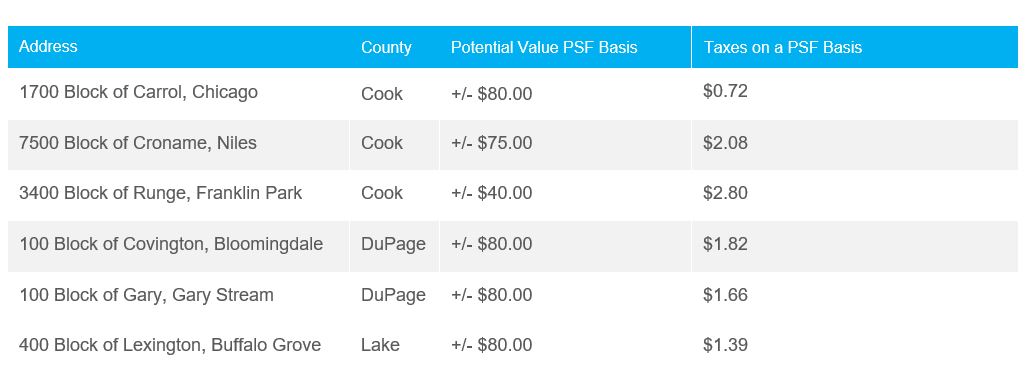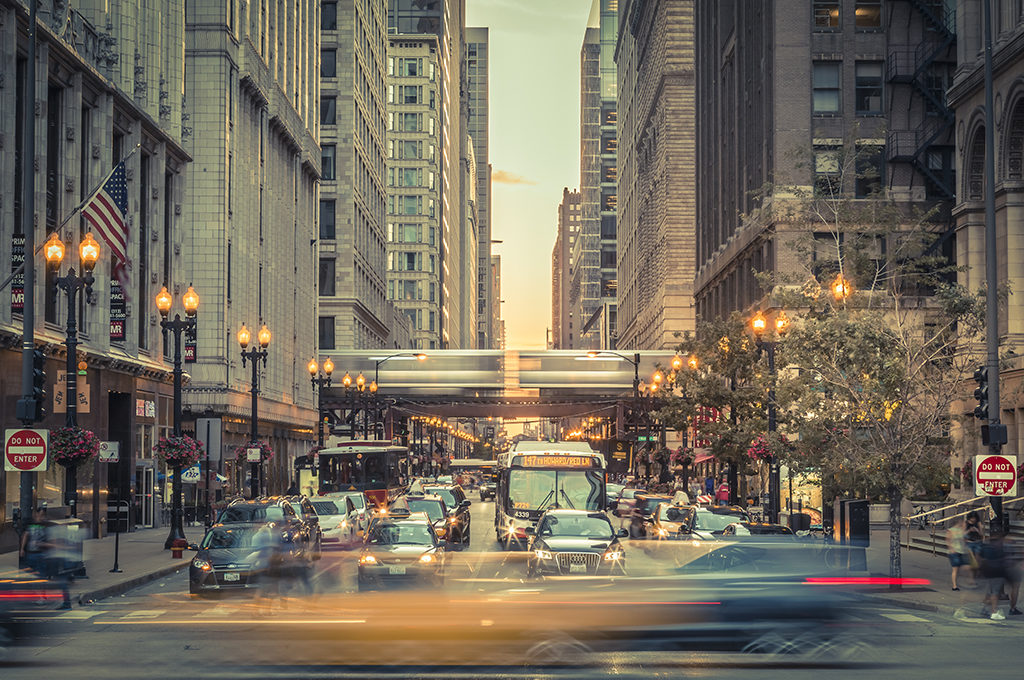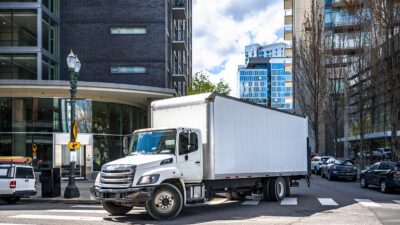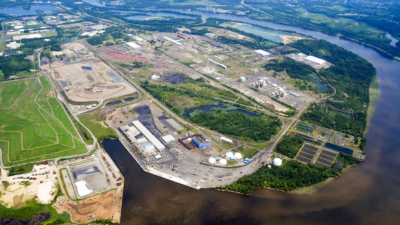Which Illinois submarket would you guess has the higher real estate tax rate: Chicago or suburban Cook County? If you’re anything like the building owners I work with, you will be shocked to know that the real estate tax bill for Chicago industrial property is the lowest per square foot of any submarket in Northern Illinois.
Consider these fairly comparable manufacturing buildings in the chart below. These buildings are all in the 16’–20’ clear height range and feature heavy power, a few docks and about 5 percent office space. The potential value per square foot column shows that all of the buildings, with the exception of Franklin Park, will sell within a tight range. And yet, Chicago’s taxes are a fraction of those of the Cook County suburbs and still far below those of the surrounding counties.

I have helped many industrial companies relocate from the narrow, congested streets of downtown Chicago to beautiful, expansive business parks in the suburbs. There’s no denying that suburban areas can offer many appealing benefits, from shorter commutes to more plentiful lunch options. But if every penny counts, industrial real estate owners may want to give Chicago a second glance, as many other companies have done in recent years.
Steven A. Kohn, SIOR is a corporate real estate broker and senior vice president for Colliers International. His extensive transaction expertise both on the tenant and landlord side includes build-to-suits, leasing, and sales. He coordinates additional services including lease administration, project management, property management and incentive negotiations. He has been jokingly referred to as the “Broker’s Broker” for taking listings “everywhere you don’t want to be” yet he remains a major force in the market representing a range of clients from small local firms to Fortune 500 corporations. His more creative recent assignments include sales of a land parcel that had been on the market for over 10 years, a moldy building that had been abandoned by its lender and handed back to the Cook County Land Bank Authority, as well as several buildings on the west side of Chicago located miles from interstates and Starbucks.

 Colliers Insights Team
Colliers Insights Team

 Craig Hurvitz
Craig Hurvitz
 Lauren Pace
Lauren Pace Ronna Larsen
Ronna Larsen
 Tom Golarz
Tom Golarz Michael Golarz
Michael Golarz